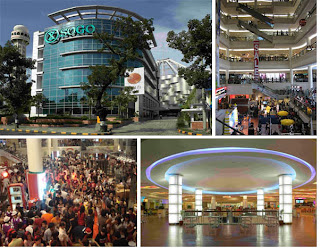Were there any major development in the non-REIT space for me in 2Q 2016?
Selling most of my investment in NeraTel probably qualifies. I sold about 90% of my investment in NeraTel.
Being a relatively substantial part of my investment portfolio, the sale, as you might have guessed, bumped up the cash level in my portfolio by quite a bit.
A happy problem?
In the short term, with the divestment gains, it is probably a happy problem but if I do not put the money to more productive work, we would have to remove "happy" from the phrase. So, I put some of the money to work.
In the non-REIT space, in 1Q 2016, some readers might remember that I bought DBS, DBS and more DBS. Even now, DBS is trading at a discount to NAV and a relatively low PE ratio of about 8x. Paying out about a third of its earnings as dividends, the yield is almost 4%.
Thanks to BREXIT, I was able to add to my investment in DBS as its share price declined, breaking a technical support. I would like to collect more on any further weakness.
In 2Q 2016, I also added to my investments in Starhub, VICOM, QAF Limited and Croesus Retail Trust on lower prices offered by Mr. Market.
Investing for income, I am interested in entities which have strong income generating abilities. Of course, they must pay meaningful dividends.
A handful of readers asked me for my thoughts on Croesus Retail Trust's proposal to be internally managed. It is quite interesting since it would be the first investment trust to be internally managed in Singapore if the deal is accepted by its unitholders.
All else remaining equal, internal management is a good thing for Croesus Retail Trust as it would mean that profits which would have gone to the external manager could be distributed to unitholders instead. The probability of conflict of interest between an internal manager and the unitholders will also be lower.
Of course, an external manager of any investment trust is a profitable enterprise, earning regular fees. No external manager in his right mind would give this up for a song. The price to internalise Croesus Retail Trust's manager is set at a princely sum of S$50 million.
For FY2015, the external manager recorded earnings of about S$500,000. Paying S$50 million to internalise the management would mean paying a PE ratio of 100x. Comparatively, ARA which manages a portfolio of REITs like Suntec REIT is trading at a PE ratio of about 15x. Go figure.
Although I like the idea of an internal manager for Croesus Retail Trust, I think paying S$50 million for this would be a price too high.
Post BREXIT, I also added to my investment in OUE Limited which I first blogged about in 2014 as a possible asset play. I basically paid 50c for what was worth $1.00. It was a smallish position as I was wary of the situation with Twin Peaks condominium. See my past analysis: here.
I decided to add to my investment because the situation with Twin Peaks has improved with many more units sold but the stock traded at an even bigger discount to NAV. While waiting for value to be unlocked, I will get some pocket money from the regular dividends OUE Limited declares.
Very much along the same line of thought, I decided to also increase my investment in Wing Tai Holdings. Although they have much more exposure to development properties compared to OUE, they have a stronger balance sheet. Mr. Market could be overly pessimistic. See my past analysis: here.
In 2Q 2016, I received income from:
1. APTT
2. ST Engineering
3. SPH
4. PREH
5. QAF Limited
6. Wilmar
7. ARA
8. Hock Lian Seng
9. SCI
10. SMM
11. OUE Ltd
12. Hong Leong Finance
13. DBS
14. NeraTel
15. Accordia Golf Trust
16. Croesus Retail Trust
17. Starhub
18. Ascendas H-Trust
I hope I have not missed out anyone.
Total income received from non-REITs in 1H 2016:
S$ 58,545.01
That is about S$ 9,757.00 a month.
I will continue to nibble at stocks and if a correction in the magnitude of 10% or more should happen, I am prepared to buy much more.
Related posts:
1Q 2016 income from non-REITs.
























































